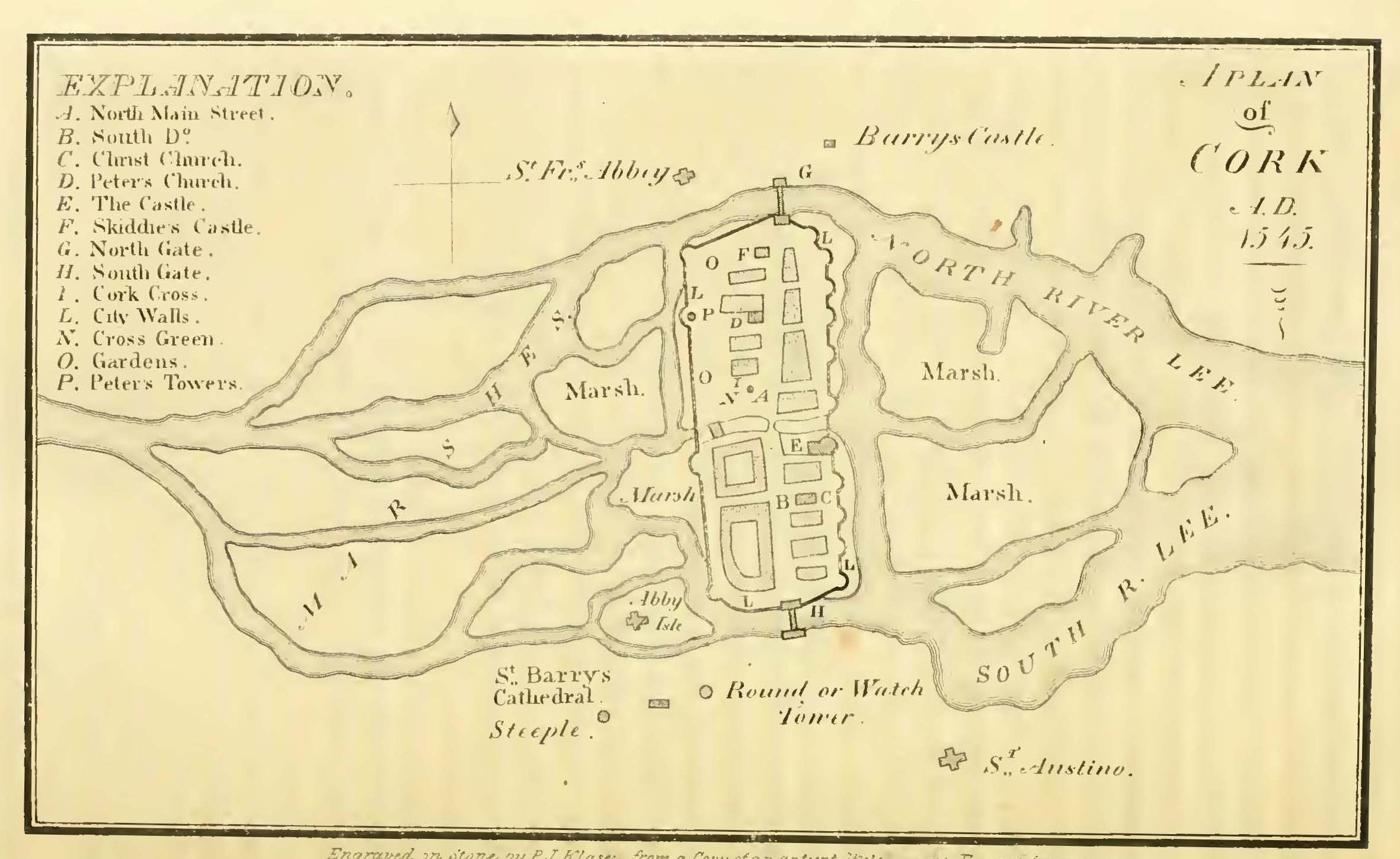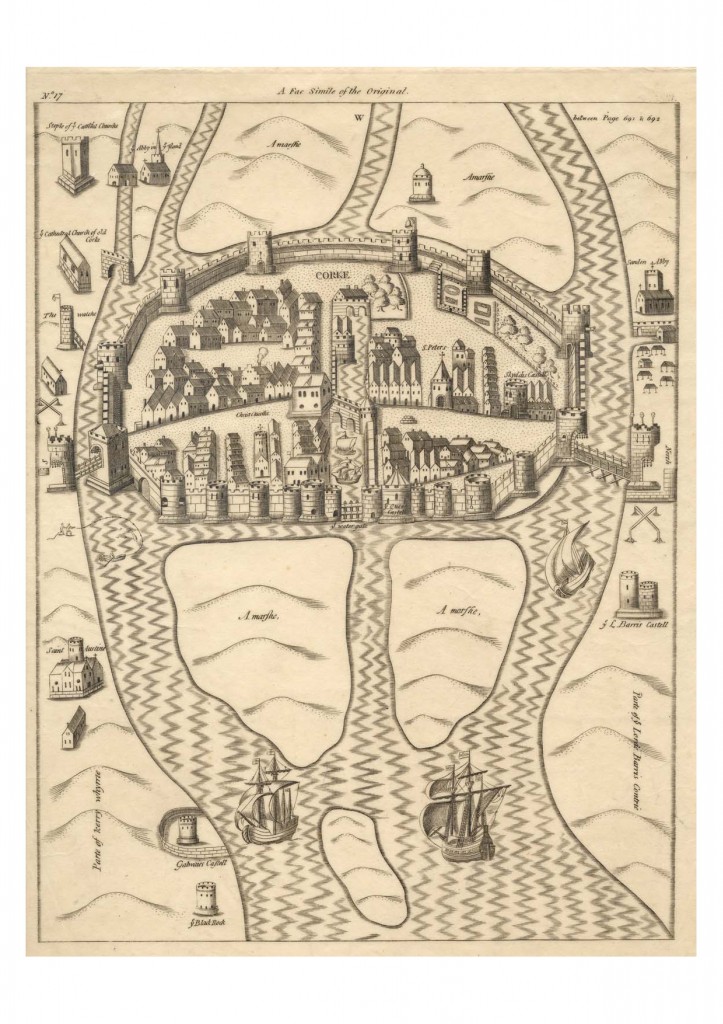ONE. The well-known ‘Tower of London’ map of Cork was commissioned for military purposes but the cartographer is unknown. A surprisingly early date of 1545 is marked on it top, right-hand corner. Critically, what survives is only a modified version, and the original plan, stored in the Tower of London, has been lost. Hence, the early-than-expected date is open to question.

The surviving version was made from a lithograph by Peter Joseph Klasen. He was born in Prussia in c. 1817, and later moved to Ireland – where he was employed by the Board of Public Works as District Engineer (Dictionary of Irish Architects 1720-1940). Klasen’s plan was first published in Tuckey’s Cork Remembrancer in 1837 and is based on an earlier map of unknown origin, which may not have been in good condition. In a lithograph, a mirror image is created by etching detail from an image onto a limestone block. Close inspection shows that Klasen tidied up the map placing the place-names in a modern typeface. It is likely also that he modernised old spellings, such as ‘marshe’ and ‘Corke’.
Nonetheless, the sophisticated style of the plan, when compared to other sixteenth century surveys, indicates that it was been based on a methodical survey. And although there is only minimal representation of the city’s buildings, the plan shows estuary both to the west and east of the walled city; including its branching and rejoining. As many as nine marshy islands are recognized west of the walled city and four more are drawn to the east. Taken as a whole, the work reveals much about the geomorphology of the estuary. For instance, the gradual widening of the tidal channels downstream is obvious as they become increasingly tidal. Interestingly, the area to the east of the medieval city and nearest to the Cork Harbour comprised as much water as land – the magna aqua or ‘great water’ of medieval documents.
TWO. On the Pacata Hibernia plan (1585-1600), the medieval city of Cork is seen from a bird’s eye view. The sweeping lines of the plan are as much artistic as accurate and some historians consider that, rather than the ‘Tower of London’ plan, it represents the earliest record of Cork’s urban fabric (Kenneth Nicholls in the Atlas of Cork City, 2005).

The view is from the east, and three main channels flow towards the observer. These waterways are clearly shown as flowing both through and around the walled city. The Anglo-Irish settlement is markedly oval in shape. The three bridges, which carry the spinal main street over the channels, are drawn in such detail that their style of construction is easy to make out. Upstream of the city, the North Channel is shown as the widest channel. The perpendicular nature of the Western and Eastern Canals relative to the natural grain of the valley is obvious as is their position close to the city walls. The intramural harbour on the Middle Channel can also be seen, protected by a water gate at its eastern end. The extra-mural islands are not named, each being labelled simply, ‘A marshe’.
OPINION.
During the second half of the sixteenth century, the skill-set available to surveyors and the ‘art of cartography’ itself, was evolving rapidly (see for example, Maps in those days. Cartographic methods before 1850 by J.H. Andrews, 2009). Thus, it is likely that both artistic and carefully surveyed plans were both being commissioned in this period. In summary, it is probably not possible to determine which is the oldest of the two plans , and instead to simply assume for the moment, that an expert and skillful surveyor was sent from England at some time in the sixteenth century.
Notes.
- Some of the background information in this article was provided by Kenneth Nicholls, formerly of the History Department, UCC.
- The reader should refer to reviews by Eugene Carberry (Journal of the Cork Historical and Archaeological Society, 1943) and Gina Johnson (The Laneways of medieval Cork, 2002). Images of many of the old maps are available at corkpastandpresent.ie as well as in the Atlas of Cork City (Crowley et al. 2005, Cork University Press).
- It should be noted that several new formal names are introduced in this report in order to simplify discussion. These names are the Middle Channel for the centrally located, natural waterway situated between the North and South Channels, and the Western and Eastern Canals for the artificial waterways on each side of the walled city.